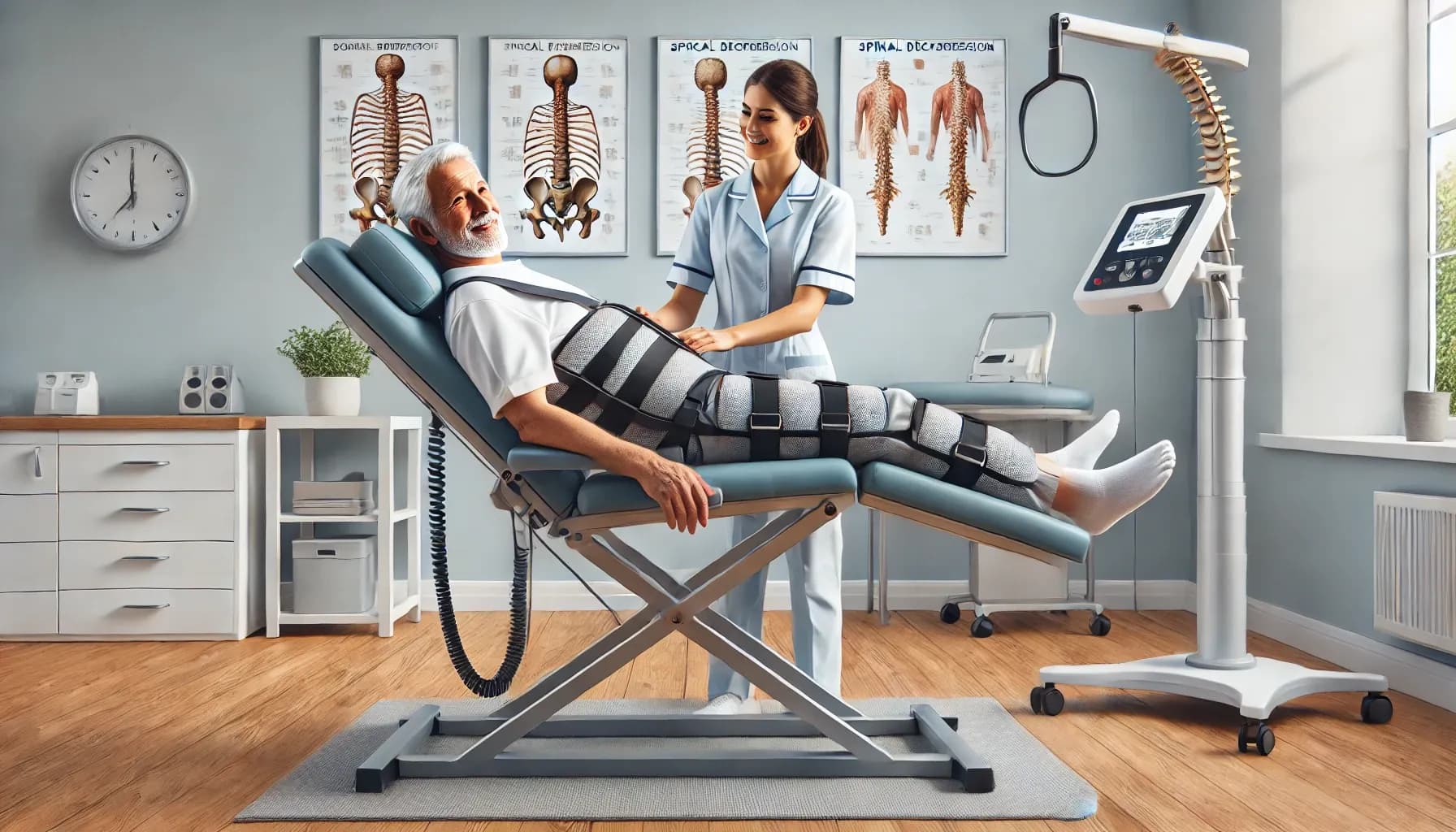Understanding Spinal Decompression: A Guide to Treatment Options and Specialists
Spinal decompression therapy can be an effective solution for those suffering from chronic back pain. This guide explores treatment options, the role of specialists, and tips for finding the best care. By understanding the benefits and methods of spinal decompression, patients can make informed decisions about managing their back pain and improving their overall quality of life.

What is Spinal Decompression Therapy?
Spinal decompression therapy is a non-surgical treatment that aims to relieve pressure on the spine, which can alleviate pain caused by herniated discs, sciatica, and other spinal issues. It involves using a traction table or similar device to gently stretch the spine, allowing discs to reposition and reducing pressure on nerves. This treatment is often recommended for individuals seeking alternatives to surgery, particularly seniors or those with chronic back pain.
How Does It Work?
During a spinal decompression session, you lie on a specialized table while a harness gently stretches your spine. This process creates negative pressure in the discs, promoting the flow of nutrients and oxygen to the affected area. Over time, this can help reduce pain, improve mobility, and support the healing process of damaged spinal tissues.
Choosing the Right Specialist for Spinal Decompression
Selecting the right healthcare provider is crucial for effective treatment. Here are the main types of specialists you may consider:
Chiropractors
Chiropractors are often the first choice for spinal decompression therapy. They specialize in diagnosing and treating musculoskeletal disorders, particularly those related to the spine. Chiropractors use manual adjustments, spinal decompression techniques, and other therapies to help alleviate pain and improve spinal health.
What to Look For in a Chiropractor
When choosing a chiropractor, consider their experience with spinal decompression therapy. Look for professionals who are certified and have positive reviews from previous patients. It's also beneficial to find a chiropractor who offers a comprehensive treatment plan that includes physical therapy and exercises to support recovery.
Medical Doctors and Pain Specialists
For more complex cases, a visit to a medical doctor or a pain specialist may be necessary. These professionals can provide a broader range of treatments, including medication, injections, and surgical options if needed. They often work in conjunction with chiropractors to create a holistic treatment plan tailored to the patient's needs.
When to Consult a Pain Specialist
If you have severe pain, neurological symptoms like numbness or weakness, or if chiropractic care alone has not been effective, a pain specialist may offer additional options such as epidural injections or nerve blocks to provide relief.
Treatment Options for Spinal Decompression
Spinal decompression therapy can be performed using various techniques, depending on the severity of the condition and the patient's health status. Here are the primary methods:
Non-Surgical Spinal Decompression
This is the most common form of therapy and involves using a traction table to gently stretch the spine. It is a safe and effective option for many individuals with mild to moderate back pain. Sessions typically last 30 to 45 minutes and are repeated over several weeks for optimal results.
Surgical Spinal Decompression
For more severe cases, surgical intervention may be necessary. Procedures such as laminectomy, discectomy, or spinal fusion can be used to relieve pressure on the spinal cord or nerves. Surgery is generally considered only after non-surgical methods have been exhausted and when there is significant impairment or risk of permanent damage.
Complementary Therapies
In addition to spinal decompression, other treatments like physical therapy, acupuncture, and lifestyle changes can support overall spinal health. Physical therapy exercises help strengthen the muscles around the spine, improving stability and reducing the risk of future injuries.
Finding the Best Spinal Decompression Specialist Near You
Finding the right specialist involves researching local healthcare providers, reading reviews, and scheduling consultations to discuss treatment options. Here are some steps to help you find the best care:
Research and Reviews
Start by searching for specialists in your area. Online platforms like health directories and review sites can provide insight into patient experiences and the quality of care. Look for professionals who have a strong reputation in spinal health and positive feedback from patients.
Consultation and Treatment Plan
Schedule consultations with a few specialists to discuss your condition and potential treatment options. A good specialist will take the time to understand your medical history, perform a thorough evaluation, and develop a personalized treatment plan. Ask questions about their experience, success rates, and what to expect during the therapy process.
Insurance and Costs
Check with your insurance provider to see what types of spinal decompression therapies are covered. Some non-surgical treatments may not be fully covered, so it's important to understand the costs involved. Many specialists offer payment plans or financing options to help manage expenses.
Benefits of Spinal Decompression for Seniors
Spinal decompression therapy can be particularly beneficial for seniors who may be more prone to spinal conditions due to age-related changes. The non-invasive nature of the therapy makes it an ideal option for older adults who may not be candidates for surgery.
Improving Quality of Life
By relieving pain and improving mobility, spinal decompression can significantly enhance the quality of life for seniors. Regular sessions can help reduce reliance on pain medications and support overall physical activity, which is crucial for maintaining health and independence.
Safe and Effective
With minimal risks and side effects, spinal decompression therapy is considered a safe option for most individuals, including seniors. It’s important to work with a specialist who understands the unique needs of older adults and can adjust the treatment plan accordingly.

